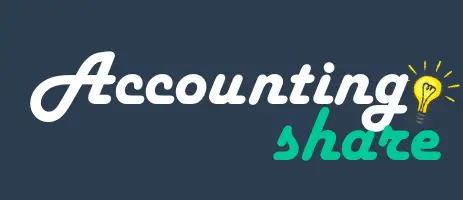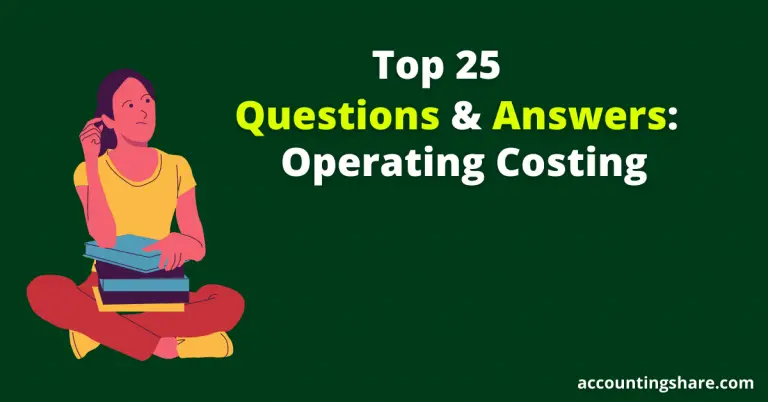Top 25 Questions and Answers-Job Order Costing [With PDF]
Today we will learn the “Top “25” Questions and Answers-Job Order Costing.” You will get a basic idea of the job order costing if you read it with proper focus from start to end.
So let’s get started.
Questions and Answers-Job Order Costing
Question-01: What’s the Job-order Costing?
Answer: Job order costing is a cost accounting system that allocates costs to each job or batch.
Question-02: In which area, the job order costing is most prevalent?
Answer: The job order costing system is most prevalent in
- Manufacture of an Airplane
- Creation of a movie
- Making of a truck, car, bus, etc.
- Service for consulting.
Question-03: What are the features of the job order costing?
Answer: The features of the job order costing are as follows:
- Each job or batch has its own differentiating features.
- Measures costs, rather than for fixed periods, for each completed job.
Question-04: What is the main objective of the job order costing?
Answer: The job order costing’s main objective is to measure the cost per job or batch.
Question-05: What is the benefit of the job order costing?
Answer: The job order costing gives more valuable information to assess individual projects’ feasibility and forecast costs while preparing bids for potential jobs.
Question-06: What is the demerit of the job order costing?
Answer: The job order costing requires a large amount of data entry to determine each job order’s cost. It is time-consuming to record this data. If the information is not entered correctly, then the product’s cost is inaccurate.
Question-07: What is the job cost sheet?
Answer: The Job Cost Sheet is a form used to record the costs of a particular job and to calculate the total and unit costs of the job completed.
Question-08: What are the raw materials?
Answer: Raw materials are any material that goes into the finished product.
Question-09: How do companies allocate raw material costs to jobs?
Answer: In response to demands, companies allocate raw materials costs to jobs when their materials storehouse issues them.
Question-10: What’s the material requisition slip?
Answer: The Materials requisition slip is a document authorizing the supply of raw materials from storage to production.
Question-11: How do companies allocate factory labor costs among jobs?
Answer: Companies allocate factory labor costs to jobs based on time tickets prepared when done.
Question-12: How do companies allocate overhead costs to jobs?
Answer: it is not possible to allocate overhead costs to individual jobs based on real costs incurred. Instead, through a predetermined overhead rate, businesses allocate manufacturing overhead to work in the process and to specific jobs on a projected basis.
Question-13: What is the over-applied overhead?
Answer: Over-applied overhead is a situation where the overhead allocated to work in the process is higher than the overhead incurred.
Question-14: What is the predetermined overhead rate?
Answer: The predetermined overhead rate is based on the relationship between the estimated annual overhead costs and the expected annual operating activity, expressed as the basis of a common activity.
Question-15: How to calculate the predetermined overhead rate?
Answer: Predetermined Overhead Rate= Estimated Annual Overhead Costs / Expected Direct Labor Cost
Question-16: What is the process cost system?
Answer: The process cost system is a cost accounting system used when a company produces many similar products.
Question-17: What is the time ticket?
Answer: A time ticket is a document that describes the worker, the hours worked, the account and works to be charged, and the total labor cost.
Question-18: What is the under-applied overhead?
Answer: Under-applied overhead is a situation in which there is less overhead allocated to work in the process than the overhead incurred.
Question-19: What is the Bill of Materials (BOM)?
Answer: The bill of materials is a document describing the form and quantity needed to complete a product unit of each type of direct material.
Question-20: What is the overhead application?
Answer: Overhead application is charging overhead costs of production to work cost sheets and the account of Work in Process.
Question-21: What is a Plant-wide overhead rate?
Answer: A single predetermined overhead rate used in a plant is the “plant-wide overhead rate.”
Question-22: What are the finished products?
Answer: Finished products are units of merchandise that have been completed but have not yet been delivered to consumers.
Question-23: What is the cost of goods manufactured?
Answer: The manufacturing costs associated with the completed products during that time are the cost of the goods manufactured.
Question-24: What is the cost of the goods manufactured schedule?
Answer: The cost of the goods manufactured schedule comprises three product cost elements—direct materials, direct labor, and production overhead. And that summarizes the portions of those costs that remain in the inventory of Work in Process and are converted to finished goods from Work in Process.
Question-25: What is the cost of goods sold schedule?
Answer: The schedule of cost of goods sold is a schedule that comprises three elements of product cost-direct materials, direct labor, and overhead production, and that summarizes the portions of those costs that remain in the inventory of finished products and are converted to cost of goods sold from finished goods.
I hope, at the end of the article, you understand the job order costing. Read these Top “25” Questions and Answers- Job Order Costing regularly and enhance your accounting knowledge.
You can also read:







